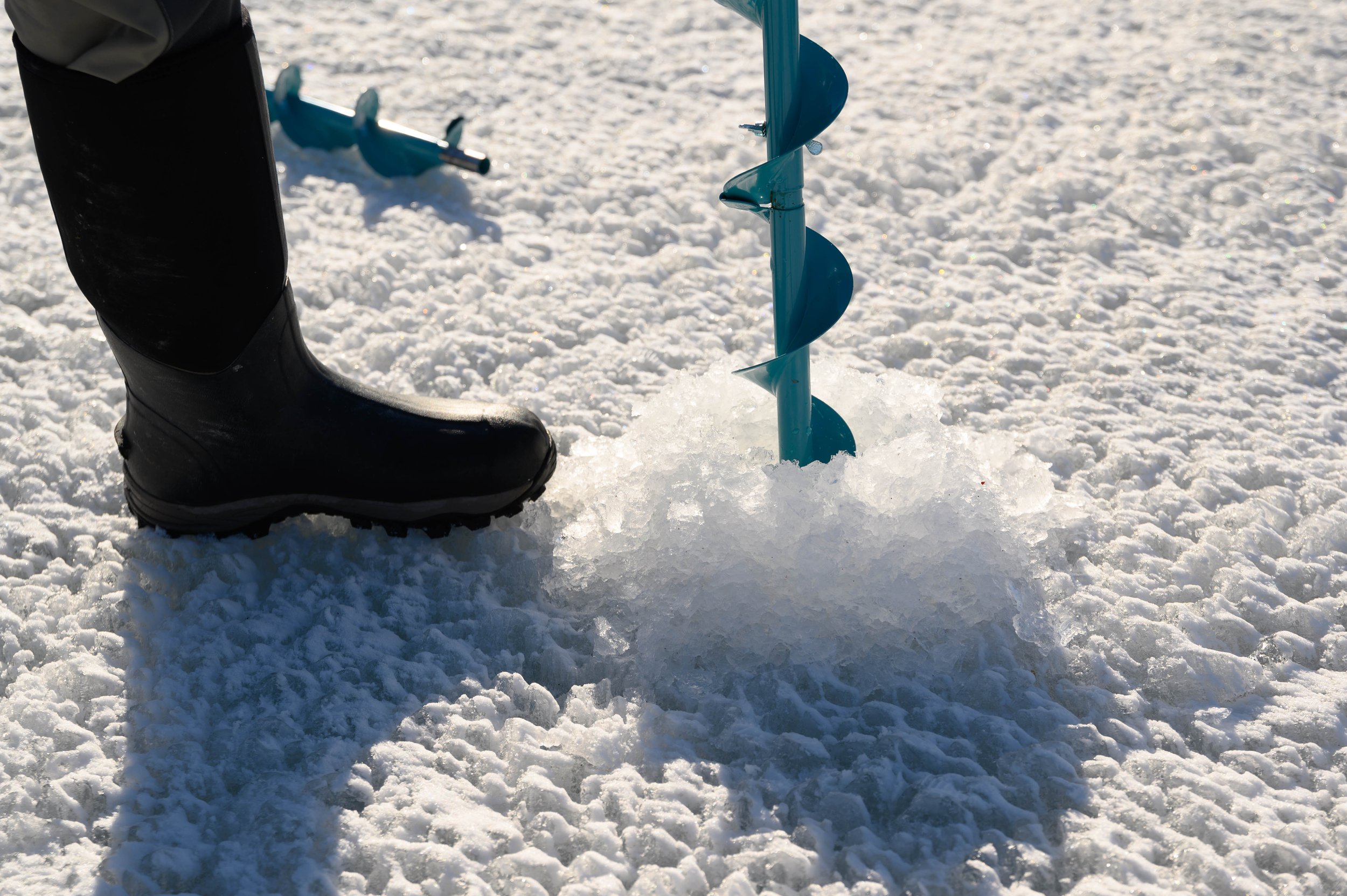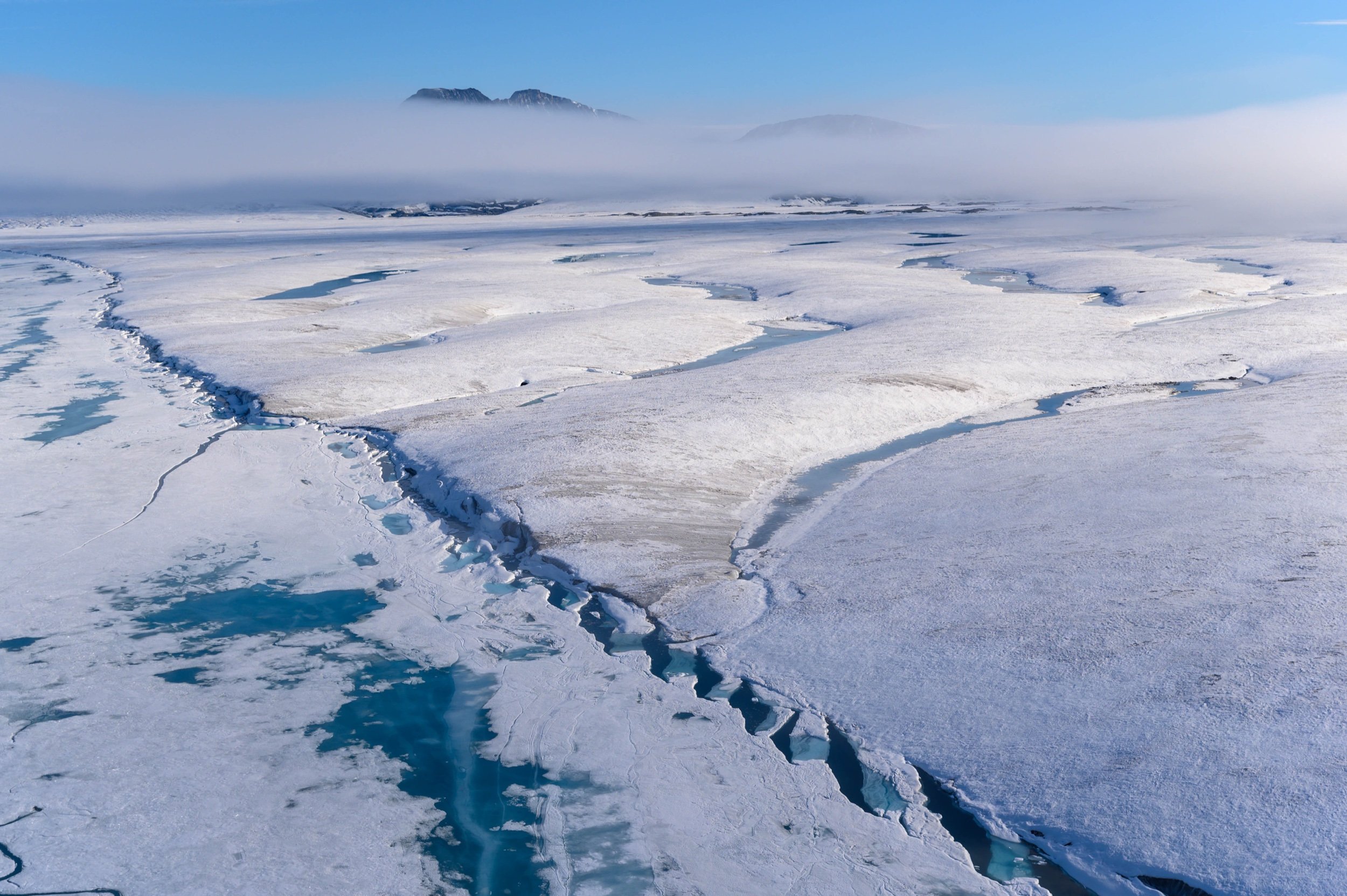















Joseph Shoapik, a resident of Grise Fiord, Nvt., peers down into a crack in the ice alongside Alex Forrest, a limnologist from the University of California, Davis. Just below this ice, a thin layer of freshwater used to float on top of the seawater in what’s known as an epishelf lake — the last of its kind in Canada.
Joseph Shoapik, a resident of Grise Fiord, Nvt., peers down into a crack in the ice alongside Alex Forrest, a limnologist from the University of California, Davis. Just below this ice, a thin layer of freshwater used to float on top of the seawater in what’s known as an epishelf lake — the last of its kind in Canada.